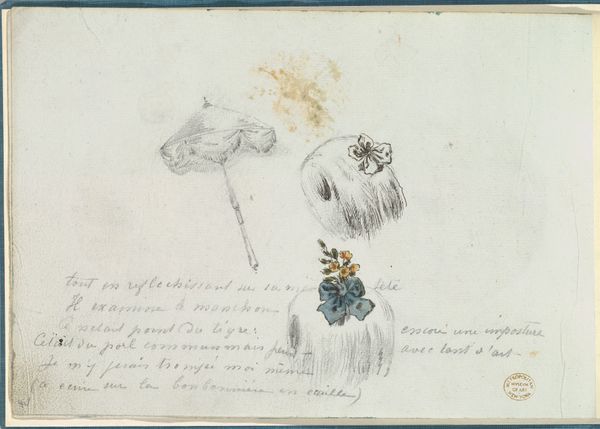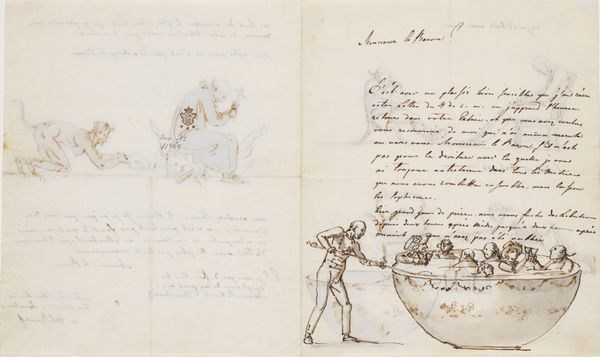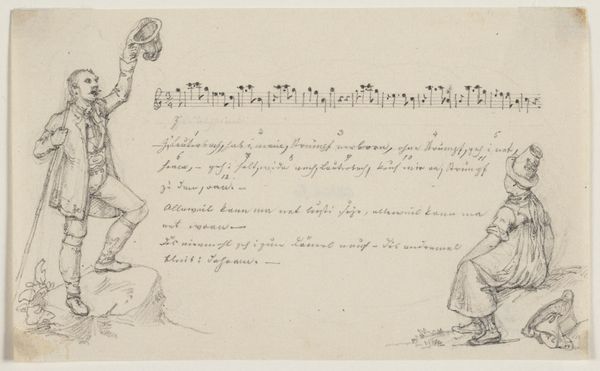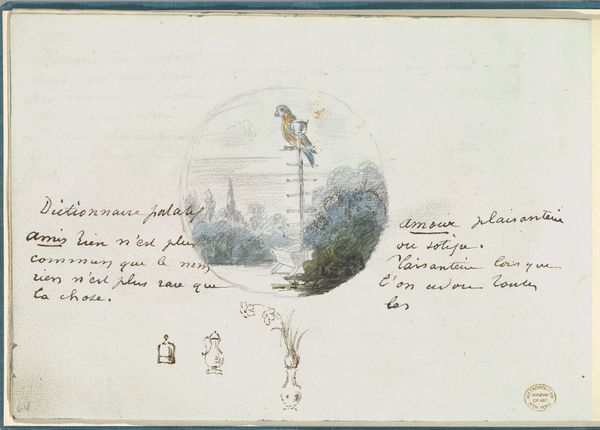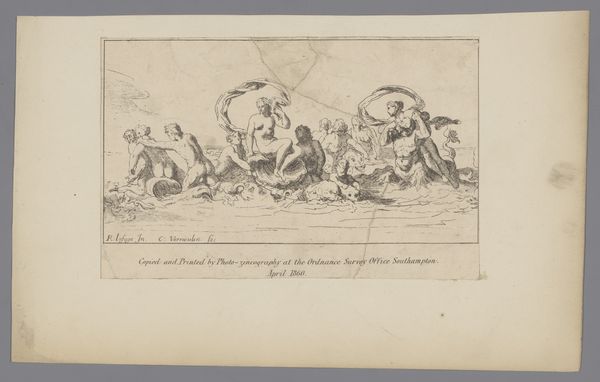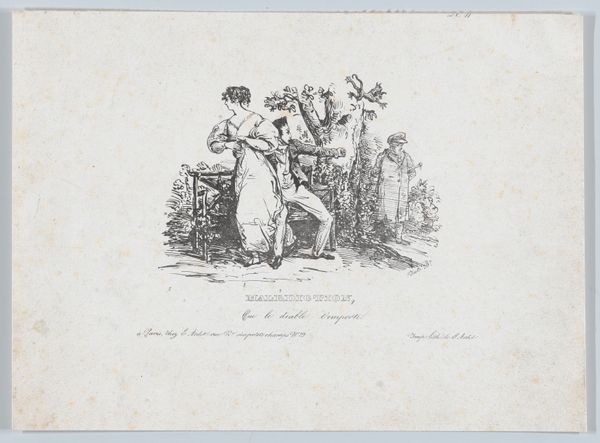
drawing, paper, dry-media, pencil, architecture
#
portrait
#
drawing
#
paper
#
dry-media
#
personal sketchbook
#
pencil
#
decorative-art
#
miniature
#
architecture
Dimensions: Sheet: 6 3/4 x 9 11/16 in. (17.1 x 24.6 cm)
Copyright: Public Domain
Curator: Here, we see "Sketches for a Bonnet and Accessories," a drawing done in pencil on paper around 1785-1790. It's currently housed here at the Met. The drawing offers several close studies including a bonnet with a profusion of ribbons and flowers, a hair ornament, and what appears to be a cushioned stool. Editor: It’s such an intimate glimpse. It gives me the impression of almost stumbling upon a personal sketchbook page filled with half-formed ideas, textures, and an artist playing with potential designs. The way the pencil marks capture the fabrics, it feels so tangible. Curator: Exactly, I see these sketches as a window into the material culture of the late 18th century. We can imagine this page was likely composed by an artist grappling with class and identity. Consider the rising merchant class during this time, they sought ways to visually declare themselves through these extravagant markers of wealth and leisure, each ribbon carefully rendered. Editor: Right. The means of producing such elaborate adornments were extensive. This was an industry reliant on garment workers, lace makers, and milliners often toiling in poor conditions. It provokes reflection on labor, material, and ultimately consumption of craft within society. How these "luxury" items reinforce historical inequality. Curator: And for women, these adornments often served as a means of expressing individuality and negotiating societal expectations. The sketches open a dialogue about fashion as a form of self-expression and constraint, a careful calibration of taste and power, but what stories remain untold from behind the scenes. Editor: Well, the rapid production cycle and ephemeral nature of fashion contribute further. Like the workers themselves, the details in these fashion items became worn down by continuous reproduction. To reflect more widely upon the consequences surrounding mass labor from then to present. Curator: A compelling point. Reflecting on the power structures and consumption habits inherent in these images helps us better appreciate fashion not just as decoration, but as an ongoing negotiation with historical, gendered, and socioeconomic forces. Editor: Seeing it now, these details hold so many other stories relating to materiality and our collective engagement with craft—revealing complex relationships between labor, production, and meaning embedded within the items.
Comments
No comments
Be the first to comment and join the conversation on the ultimate creative platform.

